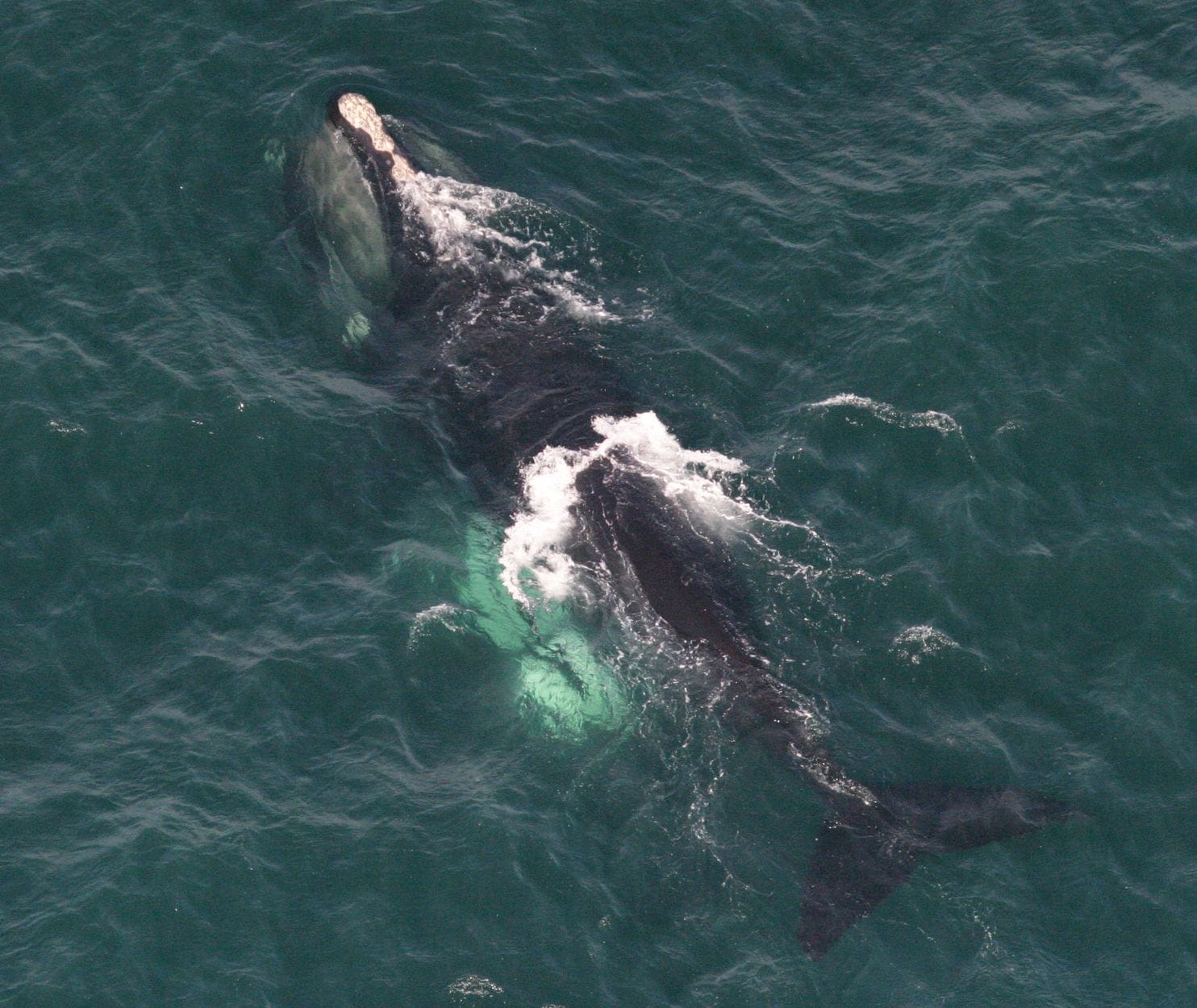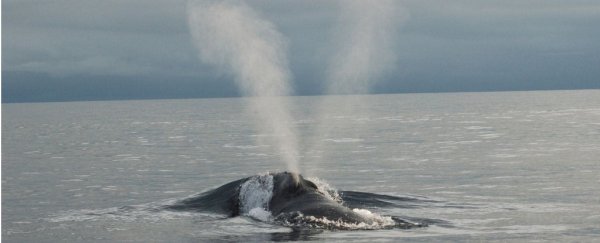A Canadian surveillance plane was scanning the waters of Gulf of St. Lawrence when it made a grisly discovery: The carcass of a North Atlantic right whale, one of some 400 remaining in the world, was drifting in the current, much of its skin sloughed off.
From there, the news would only get worse. The next day, another dead right whale was spotted in the same body of water. And an 18-year-old right whale was entangled in fishing gear near Quebec, with a rope cutting into its head and over its blowhole.
It's been a devastating summer for the endangered marine mammal. Since the start of June, eight North Atlantic right whales — or 2 percent of the global population — have been found dead in Canadian waters, alarming scientists, conservationists and government officials who had believed they had begun to make progress in protecting the imperiled species.
"It's a horrifying step toward extinction," said Regina Asmutis-Silvia, the executive director of Whale and Dolphin Conservation USA. "They're a quiet, understated superhero, and we're losing them."
Necropsy results are still pending for most of the whales, but preliminary findings for three of them suggest ship strikes.
Particularly troubling about this year's deaths is that four of the whales were breeding females, of which fewer than 100 remain. Calving rates have dropped 40 percent since 2010, according to scientists at the Woods Hole Oceanographic Institution, making the deaths of the females a major blow.
"This is currently very clearly not sustainable," said Philip Hamilton, a research scientist at the New England Aquarium in Boston. "At this rate, in 20 years, we're going to have no more breeding females, and the population will be effectively extinct."
 (NOAA)
(NOAA)
North Atlantic right whales have been on the brink of extinction before. Whalers considered the docile and slow-moving creatures full of oily blubber to be the "right" whales to hunt, and a century ago, they slaughtered almost all of them. The fortunes of the species changed in 1935, when the League of Nations made hunting them illegal. Over the course of the 20th century, their numbers slowly climbed, though they never recovered.
Then, in 2010, the population started declining again — and scientists have been racing against the clock to figure out why.
Many say the decline is linked to a change in the whales' migratory pattern, possibly as a result of warming waters. They've been showing up in unanticipated areas, where there are few regulatory protections for them.
This has made them susceptible to fatal blows from fast-moving ships or entanglement in fishing lines, which can cut through flesh and bone, slowly and painfully killing the whales by drowning, starvation or infection.
Researchers found that 88 percent of right whale deaths for which a cause was determined in the past 15 years were the result of either vessel strikes or entanglement. None of the deaths, they reported in a study published last month in the journal Diseases of Aquatic Organisms, were the result of natural causes.
Traditionally, the whales have spent the winter off Florida and Georgia, moved north to Cape Cod Bay in the spring and on to the Gulf of Maine and the Bay of Fundy for the summer. But in recent years, they've been appearing farther north, in the Gulf of St. Lawrence.
Scientists blame climate change. As the whales' usual feeding habitats have warmed, they theorize, the copepods that they like to eat have moved north. The whales followed.
"The whales are showing up in areas that we had not seen them previously," said Jonathan Wilkinson, Canada's fisheries minister. "It's more difficult [to address the issue] when the whales are moving."
For conservationists, this year has been a bad case of deja vu.
Seventeen North Atlantic right whales died in North America in 2017, including 12 in Canada, in what the National Oceanic and Atmospheric Administration declared an "unusual mortality event." The deaths were human-caused — the result of either entanglement or vessel strikes.
That was sort of a lightbulb moment for many people about how severe this issue was," said Tonya Wimmer, the executive director of the Marine Animal Response Society in Nova Scotia.
The Canadian government implemented measures including speed limits for certain vessels, a temporary ban on lobster and crab fishing in certain parts of the Gulf of St. Lawrence and increased aerial surveillance of the waters.
The restrictions were tightened in 2018 — and seemed to be working. Last year, no right whales were found dead in Canada. So officials relaxed them, to minimize the impact on industry.
But after the first of this year's deaths, the Canadian government tightened the rules again. The area in which speed limits apply has been expanded, as have the categories of boats that are subjected to it. Aerial surveillance has been increased and the triggers for fishery closures are stricter.
Hamilton says reducing the strength of the rope in fishing gear and expanding the areas subject to speed limits could reduce deaths. New technologies such as ropeless fishing gear also show promise.
Wilkinson, the fisheries minister, told reporters in New Brunswick this week that he's open to the idea of ropeless fishing gear, but noted that it comes with a "cost issue" and an "adaptation issue" for fishermen.
Wilkinson says it's not easy to strike a balance between protecting the whales and reducing the impact on industry. He said the welfare of the species is "the first and foremost thing we have to be focused on."
Wimmer applauds the government's actions, but says she doesn't think it has found the right balance between animal welfare and the protection of industry yet.
She was present for the necropsy of a 40-year-old mother and grandmother who was known as Punctuation, for the small scars on her head that resembled commas and dashes.
The whale, found dead in the Gulf of St. Lawrence in June, was hit so hard by a vessel that her organs were beginning to protrude from a six-foot cut on her back.
Wimmer says she has scars, too, from Punctuation's injuries.
"It is an absolutely horrifying thing to see."
2019 © The Washington Post
This article was originally published by The Washington Post.
